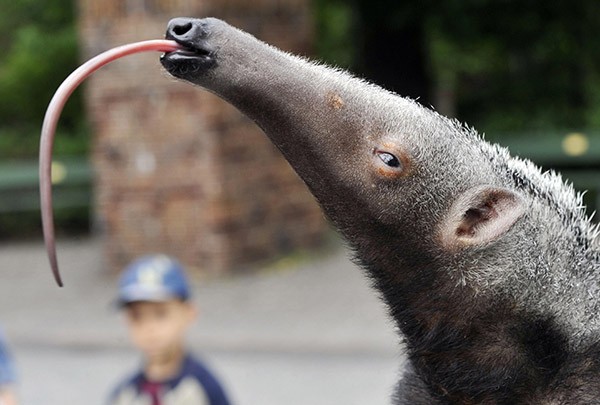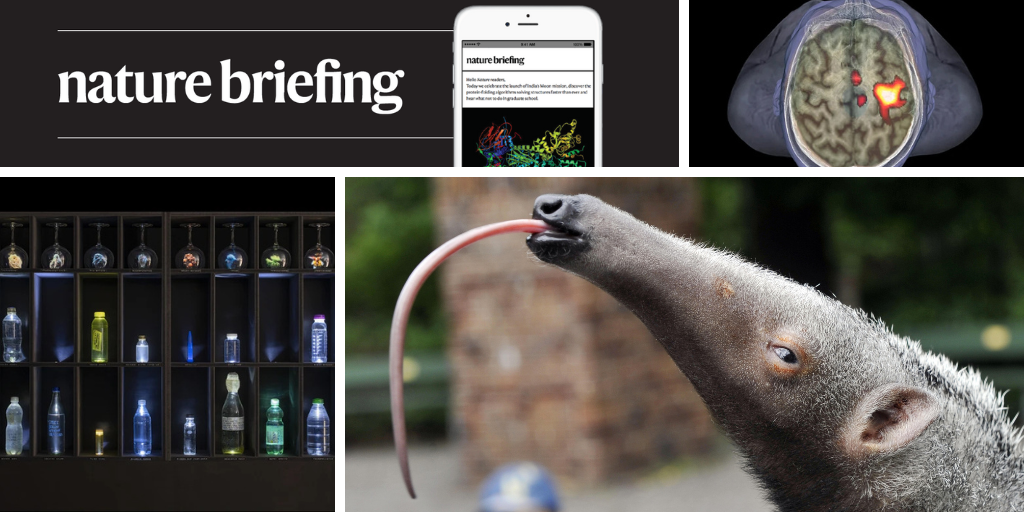You have full access to this article via your institution.
Hello Nature readers, would you like to get this Briefing in your inbox free every day? Sign up here.

Mammals have evolved into forms specialized to eat ants and termites at least 12 separate times over the last 66 million years. Their appearances might have been driven by a boom in ant and termite populations after the dinosaurs went extinct, researchers say. And evolution doesn’t discriminate — ant-eating animals have popped up among marsupials, egg-laying mammals and placental mammals. “Things keep evolving into anteaters, somehow,” says palaeontologist and study co-author Thomas Vida.
At the mere sight of a sick person, the brain kickstarts an immune response mimicking the body’s response to an actual infection. In a study, volunteers donned virtual reality headsets to view human avatars with rashes, coughs or other symptoms of illness. Researchers found that the sight of a sick person activates the brain’s ‘salience network’: a collection of regions involved in recognizing and responding to threats. This activity triggered a surge in innate lymphoid cells, which are part of the body’s first line of defence against invaders.
Reference: Nature Neuroscience paper
As China’s global standing in science has risen, recruitment programmes run by the country’s government are increasingly eyeing Chinese researchers overseas. Initiatives such as the Thousand Young Talents Plan can fast-track a researcher’s career — many recruits receive substantial funding and benefits, and take up prominent positions at universities. But not everyone is enamoured by such programmes. Young Chinese researchers who remained in the country “complain a lot” that they aren’t afforded the same assistance, says information scientist Jiang Li.
Features & opinion
As advanced neuroimaging technology becomes more widely available, scientists have been developing new, more accurate ways to test for consciousness. Assessing whether an unresponsive person is conscious can guide crucial treatment decisions, such as whether to continue their life support. But the need for better consciousness tests doesn’t only apply to humans. Detecting consciousness in other species can have implications for animal-welfare policies. And as artificial intelligence research ploughs forward, researchers are locked in debate as to whether consciousness could emerge from such technologies — and how we would know if it did.
Since 2016, the SciArt Project has invited scientists, artists and policymakers to come together to reimagine science policy. The initiative runs annual interdisciplinary projects, on topics from climate change to artificial intelligence, with the aim of producing more human-centred policies. “Connecting artistic and scientific enquiry with policymaking can powerfully shape how we think, connect and govern when issues are complex,” write the head of the SciArt Project Caterina Benincasa and former project leader Adriaan Eeckels. “Evidence is often not enough. We need to engage with diverse bases of knowledge, experiences, capacities and cultures.”

Contaminated water samples sent in by contributors are on display in the installation Haunted Waters.Credit: Nonhuman Nonsense
Haunted Waters, an installation run by the SciArt Project, aims to spark discussions on the difficulties of providing scientific advice on, and designing policies to regulate, thresholds of chemical cocktails in rivers and lakes. The piece showcases a cocktail bar of samples of contaminated water, each sent to the artist by a member of the public.
Research has shown that, when presented with an artificial intelligence (AI) overview on Google, internet users are less likely to click on a search result, and more likely to end their search altogether. If that trend continues, it could drive swathes of websites that rely on search traffic for their revenue to shut down. Google denies its AI is negatively impacting website hosts. But with ‘AI mode’ on the horizon, which would do away with search results altogether, some experts worry that AI-assisted search will severely damage the internet landscape.
Today I’m looking up. If I’m lucky, I might spot one of meteorologist Joe Rao’s suggestions for the seven wonders of the Universe that are visible in the night sky. Without a telescope, I won’t be able to marvel at the rings of Saturn or the Crab Nebula, but light pollution permitting I should be able to catch the Moon. And that’s enough for me.
While I decide whether I’m willing to splash out on decent telescope, why not let me know your thoughts on Rao’s picks, or on this newsletter, at [email protected].
Thanks for reading,
Jacob Smith, associate editor, Nature Briefing
• Nature Briefing: Careers — insights, advice and award-winning journalism to help you optimize your working life
• Nature Briefing: Microbiology — the most abundant living entities on our planet — microorganisms — and the role they play in health, the environment and food systems
• Nature Briefing: Anthropocene — climate change, biodiversity, sustainability and geoengineering
• Nature Briefing: AI & Robotics — 100% written by humans, of course
• Nature Briefing: Cancer — a weekly newsletter written with cancer researchers in mind
• Nature Briefing: Translational Research — covers biotechnology, drug discovery and pharma


